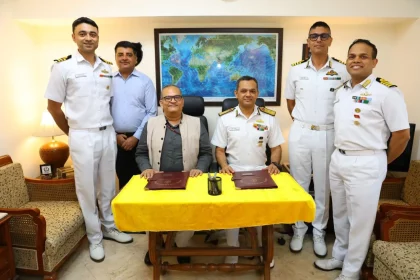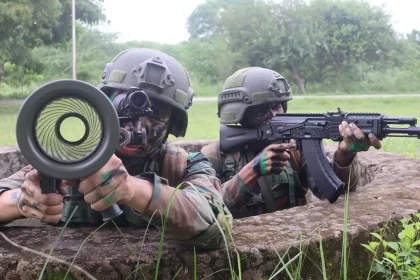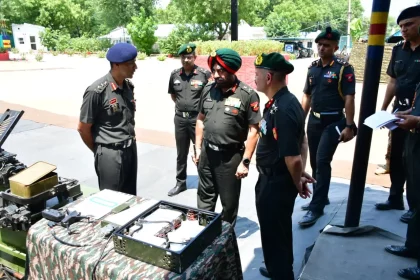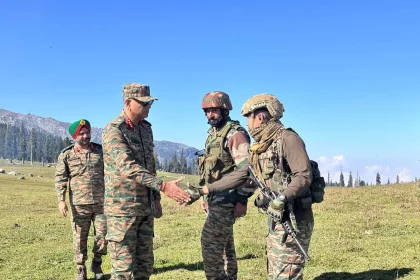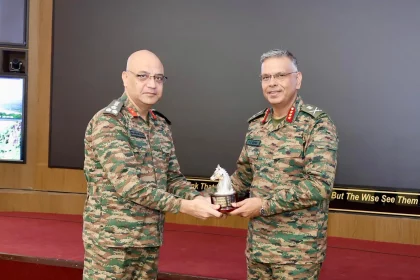MoD, Ministry of Culture Sign MoU for Stitched Ship Project – INSV Kaundinya
INSV Kaundinya to revive ancient Indian shipbuilding and sail historic Indian Ocean trade routes.
Agniveer Training Underway at 11 Gorkha Rifles Regimental Centre
Over 600 Agniveers undergo rigorous training to become future soldiers at 11 Gorkha Rifles Centre.
Garhwal Rifles Launches Mount Mukut East Expedition in Garhwal Himalayas
Surya Warriors set out to conquer Mount Mukut East, embodying courage and national pride.
Lt Gen Manjinder Singh Reviews Operational Preparedness of Dot On Target Division
Army Commander reviews drone training, counter-drone innovations in Dot On Target Division.
Lt Gen Prasanna Kishore Mishra Reviews Security Preparedness in Doda
White Knight Corps leadership assesses counter-insurgency preparedness in Doda.
National Defence College Delegation Visits White Knight Corps Headquarters
Delegation briefed on LoC dynamics, counter-insurgency operations, and Corps’ role in ensuring regional stability.

